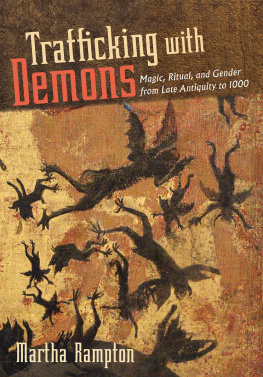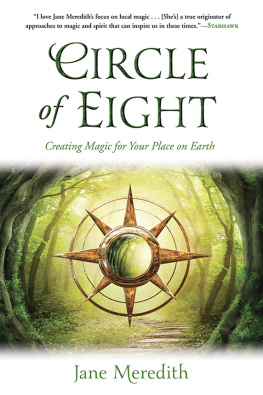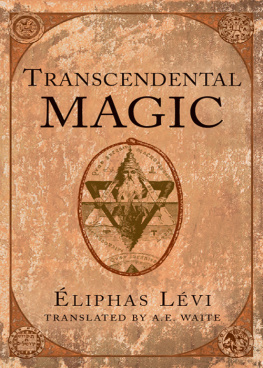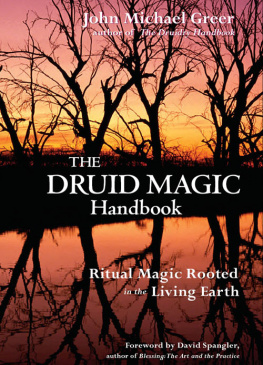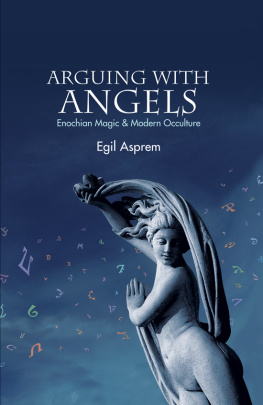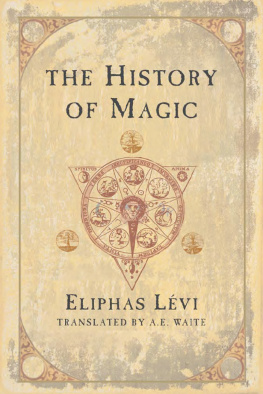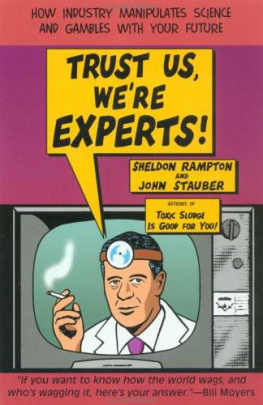The author of an undertaking such as this, which has grown and mutated many times over two decades, accumulates a long list of people to whom she is indebted. I hesitate to start that list for fear of leaving out people who should be included, but the greater wrong would be to omit mention of so many who have inspired, advised, prodded, and supported me along the way. Thomas F. X. Noble, who was there at the inception of the project, lent his wisdom and guidance throughout the process and carefully read more than one draft of the book. My interest in magic was first piqued when I took a course from H. C. Erik Midelfort at the University of Virginia; I am indebted to him, Anne J. Schutte, and Peter S. Baker for reading a very early iteration of this work and recommending that I continue my research. I was able to do that, in part, thanks to the University of Virginia Graduate School of Arts and Sciences and the Corcoran Department of History, which awarded me a duPont Fellowship.
I am thankful to Glenn Olsen, who was my mentor when I was a masters student at the University of Utah. I was an undergraduate when I first met Glenn, and he encouraged me to pursue a graduate degree and gave me the confidence to do it. My thanks go out to friends and colleagues who have read portions of this book or listened to more than one paper on the subject of early medieval magic. I have benefited greatly from conversations over the years with some of the finest thinkers in early medieval studies. Among those scholars are Courtney Booker, Marty Claussen, Lynda Coon, Makye de Jong, Paul Dutton, Emlyn Eisenach, Matthew Gabriele, Valerie Garver, Pat Geary, Kelly Gibson, Matthew Gillis, Eric Goldberg, Anne Latowsky, Amy Livingstone, Rob Meens, Jinty Nelson, and Andy Romig, all of whom have shown interest in my research and have engaged me at various points with questions and observations that clarified my thinking. Lynda Coon generously read a full draft of the book and gently nudged me to make changes that have resulted in a much improved final product. I am grateful to Aaron Greer, associate professor of anthropology at Pacific University, who helped guide me through the labyrinth of ritual theory.
I am also indebted to the anonymous readers of the manuscript who invested so much time in helping me work through what I wanted to say and how I might better communicate my ideas. Mahinder Kingra of Cornell University Press, and his predecessor, Peter Potter, have been marvelous to work with. Mahinder and the production team at Cornell can only be described as long-suffering, and I cannot imagine more skillful or thorough editors than I had in Eric Levy, Glenn Novak, and Karen Hwa. I wish to thank them all publicly for their patience, kindness, and sense of shared purpose in bringing this work to fruition.
Pacific University awarded me several grants that provided funds to facilitate my research. This book would never had been possible without the assistance of the stellar staff of the Tim and Cathy Tran Library at Pacific University. Their success at ferreting out rare and obscure electronic sources in this era of COVID-19 has been nothing short of miraculous.
My greatest debt of gratitude goes to my colleague and husband, Steve R. Smith, whose support at all stages of the growth of this book has been herculean and whose love has kept me going and made the whole thing seem worthwhile.
Abbreviations
CCCM Corpus Christianorum continuatio mediaevalis
CCSL Corpus Christianorum, series Latina
CSEL Corpus scriptorum ecclesiasticorum Latinorum
EME Early Medieval Europe
LCL Loeb Classical Library
MGH Monumenta Germaniae Historica
AA Auctores Antiquissimi
Cap. 1 Capitularia regum Francorum 1. Edited by Alfred Boretius. Hanover, Hahn, 1883.
Cap. 2 Capitularia regum Francorum 2. Edited by Alfred Boretius and Victor Krause. Hanover: Hahn, 1897.
Cap. ep. 1 Capitulia episcoporum 1. Edited by Peter Brommer. Hanover: Hahn, 1984.
Conc. aevi Kar. 2.1 Concilia aevi Karolini 2.1. Edited by Wilfried Hartmann. Hanover: Hahn, 1993.
Conc. aevi Kar. 4 Concilia aevi Karolini 4. Edited by Wilfried Hartmann. Hanover: Hahn, 1998.
Conc. aevi Mer. Concilia aevi Merovingici. Edited by Friedrich Maasen. Hanover: Hahn, 1893.
Epp. sel. Epistolae selectae
Epp. Kar. aevi Epistolae Karolini aevi
LL Leges in folio 3. Edited by Heinrich Pertz. Hanover: Hahn, 1862. Leges in folio 5. Edited by Heinrich Brunner. Hanover: Hahn, 187589.
LL nat. Germ. Leges nationum Germanicarum
SRG Scriptores rerum Germanicarum in usum scholarum separatim editi. 81 vols. Hanover: Hahn, 18712016.
SRM Scriptores rerum Merovingicarum
SS Scriptores
PG Patrologiae cursus completus series Graeca. Edited by J.P. Migne, 161 vols. Paris: Garnier, 185766.
PL Patrologiae cursus completus series Latina. Edited by J.P. Migne. 221 vols. Paris: Garnier, 184465.
Biblical references are from the New Revised Standard Version.
Primary SourcesSingle Text or Author
2 Clement: Introduction, Text, and Commentary. Translated by Christopher Tuckett. Apostolic Fathers. Oxford: Oxford University Press, 2012.
Acts of Barnabas. Translated by Glenn E. Snyder. In New Testament Apocrypha: More Noncanonical Scriptures, edited by Tony Burke and Brent Landau, 31726. Vol. 2. Grand Rapids, MI: Eerdmans, 2016.
Acts of John the Apostle. In The Apocryphal New Testament: A Collection of Apocryphal Christian Literature in an English Translation, translated by J. K. Elliott, 30347. Oxford: Oxford University Press, 1993.
Acts of Paul and Thecla. In Fathers of the Third and Fourth Centuries, edited by A. Cleveland Coxe, 48796. Ante-Nicene Fathers 7, 8. Grand Rapids, MI: Erdmans 1989.
Aelfric of Eynsham. Aelfrics Lives of Saints: Being a Set of Sermons on Saints Days Formerly Observed by the English Church. Translated by Miss Gunning and Miss Wilkinson, edited by Walter W. Skeat. 2 vols. Early English Text Society 76, 82 (vol. 1), 94, 114 (vol. 2). London: N. Trbner, 18351912. Reprint, Oxford: Boydell & Brewer, 2014.
. Homilies of Aelfric: A Supplementary Collection. Edited by John C. Pope. 2 vols. Early English Text Society 259 and 260. London: Oxford University Press, 196768.
. The Homilies of the Anglo-Saxon Church: The First Part, Containing the Sermones Catholici or Homilies of Aelfric. Edited and translated by B. Thorpe. 2 vols. London: Richard and John E. Taylor, 184446. Vol. 1 reprint, New York: Johnson Reprint, 1971.
Agobard of Lyon. De grandine et tonitruis. In Agobardi Lugdunensis opera omnia, edited by L. van Acker, 115. CCCM 52. Turnhout, Belgium: Brepols, 1981.
. Liber apologeticus. In Agobardi Lugdunensis opera omnia, edited by L. van Acker, 30719. CCCM 52. Turnhout, Belgium: Brepols, 1981.
Alcinous. The Handbook of Platonism. Translated by John Dillion. Clarendon Later Ancient Philosophers. Clarendon Press: Oxford, 1993. Reprint, 2002.
Alcuin. De virtutibus et vitiis liber ad Widonem Comitem. PL 101, cols. 61339.
. Epistolae. Edited by Ernst Dmmler, 1493. MGH Epp. Kar. aevi 4.2. Berlin: Weidmann, 1895.
. Vita Willibrordi. Edited by Wilhelm Levison, 81141. MGH SRM 7. Hanover: Hahn, 1920.
Ammianus Marcellinus. History. Translated by John C. Rolfe. 3 vols. LCL 300, 315, 331. Cambridge, MA: Harvard University Press, 193540.
The Anglo-Saxon Leechbook III

